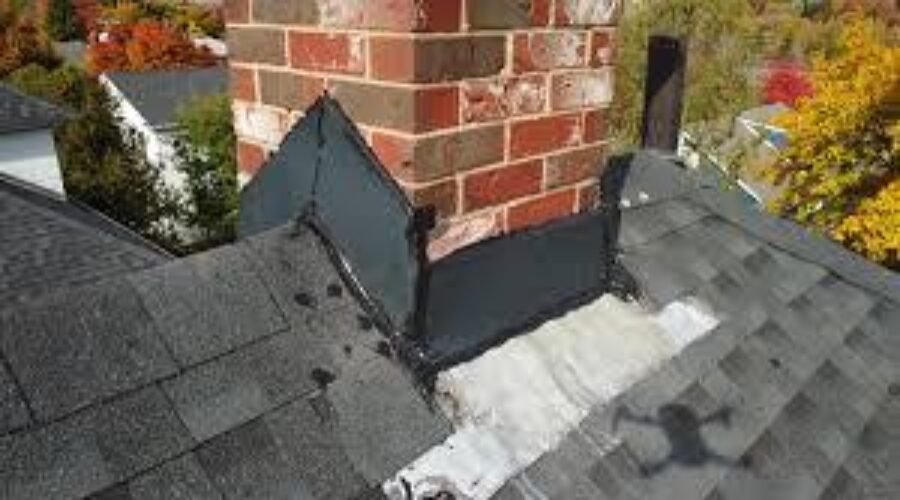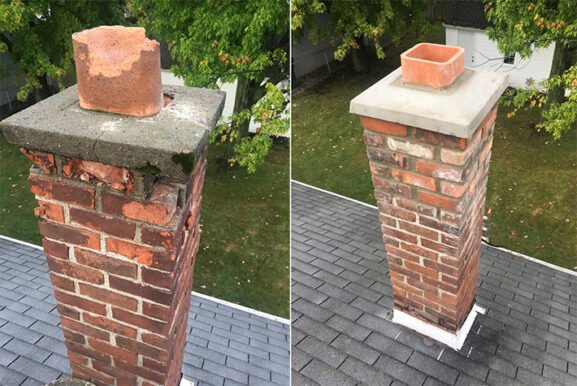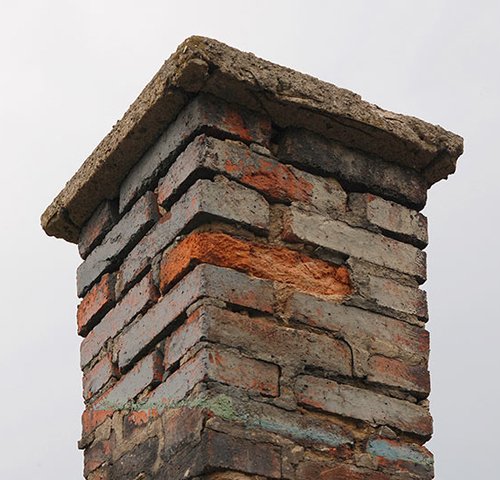Why Homeowners Shouldn’t Delay Chimney Flashing Repair and What It Might Cost
Key Takeaways
- Chimney flashing repair typically ranges from $200 to $1,500 depending on damage extent, materials used, and roof complexity
- Delaying flashing repair can lead to extensive water damage, structural issues, and higher future costs
- Early signs of flashing failure include roof leaks, water stains, and rust near the chimney base
- Hiring qualified professionals ensures proper waterproofing, preventing repeated repairs and long-term damage
Understanding What Chimney Flashing Really Does
Chimney flashing serves as the waterproof seal between your chimney and the roof. It’s usually made from metal such as aluminum, copper, or galvanized steel. The purpose is simple yet critical — to keep water from leaking into the junction where the chimney and roof meet. When installed and maintained properly, flashing acts as a barrier against rain, snow, and melting ice.
But like many roof elements, flashing is exposed to the weather year-round. Over time, materials can corrode, shift, or become loose. Once flashing is compromised, moisture begins to find its way into the home. Left unchecked, this can damage drywall, rot wooden framing, and even foster mold growth.
What Contributes to the Cost of Chimney Flashing Repair
The cost of repairing chimney flashing depends on several key factors. On average, homeowners should expect to spend anywhere between $200 and $1,500. The variation depends on the following:
Type and Extent of Damage
Small leaks or minor corrosion might only require resealing or replacing a small section of flashing. These repairs typically fall on the lower end of the price range. However, if the damage is extensive or if water has infiltrated underlying roof components, the project can become more labor-intensive — and more expensive.
Roofing and Chimney Materials
The materials used for the chimney and surrounding roof also influence repair costs. For example, replacing flashing on a shingle roof is generally simpler and less costly than working with slate or tile. The flashing material itself affects price too. Aluminum is affordable but less durable than copper, which is more expensive yet long-lasting.
Roof Slope and Chimney Size
Working on steep or high roofs requires more safety equipment and labor, increasing overall costs. Similarly, chimneys that are unusually wide or tall may need custom flashing solutions or longer installation times.
Labor and Accessibility
Labor rates vary by region, but accessibility plays a big role regardless of location. A chimney surrounded by difficult roof lines, or one that requires scaffolding or additional setup, will cost more to service. This is one reason repairs on multi-story homes tend to be more expensive.
According to data from HomeAdvisor, the national average cost for chimney flashing repair falls around $750, but prices can fluctuate based on the specifics mentioned above.
Signs Your Chimney Flashing Needs Immediate Attention
Not every leak is obvious at first. Many homeowners don’t notice flashing issues until the damage becomes hard to ignore. That’s why spotting early warning signs is so important. Here are a few key indicators:
- Water stains or damp patches on ceilings near the chimney
- Musty odors or visible mold near attic areas
- Rust stains on flashing or chimney base
- Pieces of flashing metal visible on the ground after a storm
- Crumbling mortar or brickwork around the chimney base
If any of these symptoms are present, a prompt inspection is strongly recommended. Catching flashing damage early can prevent repairs from ballooning in cost.
The Repair Process and What Homeowners Can Expect
The repair process varies depending on the severity of the damage, but most chimney flashing repair projects follow a similar sequence. First, the old flashing is removed and the roof deck is inspected. If moisture damage is found beneath the flashing, those sections of the roof may need replacement.
Next, new flashing is cut and fitted to the chimney base. A waterproof sealant is applied to edges to ensure watertight coverage. In many cases, both step flashing (which tucks under shingles) and counter flashing (which attaches to the chimney) are installed for full protection.
The entire process can take anywhere from a few hours to a full day. For more complex jobs, especially those requiring masonry repairs or roof deck replacement, multiple visits may be necessary.
Why DIY Isn’t the Best Route for Flashing Repairs
While it’s tempting to attempt flashing repair yourself — especially for smaller leaks — this usually leads to more problems down the road. Proper flashing installation involves more than applying caulk or adhesive tape. Even minor mistakes in fitting, material selection, or sealant application can lead to persistent leaks or cause more damage during winter freeze-thaw cycles.
Professional roofers and chimney specialists are trained to assess all surrounding materials and ensure the repair is comprehensive. Many also offer warranties for their work, giving homeowners peace of mind.
Preventing Costly Repairs with Routine Inspections
Chimney flashing repair isn’t just about fixing leaks after they appear. Regular roof and chimney inspections are one of the best ways to avoid unexpected expenses. Experts recommend scheduling a chimney and roof checkup at least once a year — ideally in the fall before winter storms arrive.
During these inspections, contractors can identify minor problems before they escalate, reseal joints, or tighten flashing as needed. This type of preventative maintenance is far more affordable than full-scale water damage repairs later.
When It’s Time to Replace Instead of Repair
Sometimes, repair just isn’t enough. Flashing that has deteriorated due to rust, multiple failed patch jobs, or poor initial installation might need to be fully replaced. This is especially true for older homes where materials have passed their life expectancy.
If your home is undergoing other roof work — such as shingle replacement — it may be more cost-effective to replace the flashing at the same time. Bundling jobs can reduce labor costs and minimize disruptions.
Long-Term Value of Getting the Job Done Right
Investing in quality chimney flashing repair offers more than just a leak-free home. It preserves the structural integrity of your roof, prevents interior damage, and helps maintain property value. Flashing may not be the most visible part of your home, but it plays a vital role in keeping your living space dry, safe, and protected year-round.


